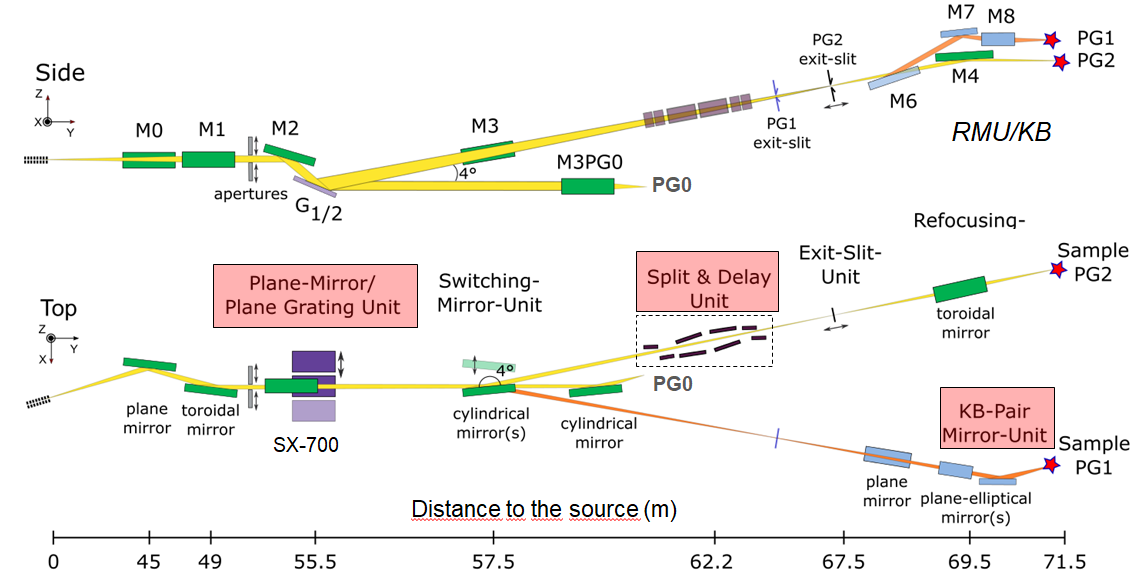The PG1 monochromator beamline branch houses the XUV RIXS spectrometer (named TRIXS) as a permanent experimental end-station for RIXS studies on solid samples. The instrument is designed to cover the photon energy range from 36 - 200 eV with a spectral resolving power of ~1700. The TRIXS spectrometer end-station effectively operates with two reflective off-axial parabolic mirrors and a plane-grating unit, making use of the same SX 700 type monochromator as PG2. Kirkpatrick-Baez (KB) refocusing optics produces a fixed FEL microfocus of 5 μm (vertically) at the sample position. The facilities optical pump-probe laser is coupled to the TRIXS end-station thus allowing for time-resolved resonant inelastic X-ray scattering studies on solid samples at FLASH.The total time-resolution of the instrument for time-resolved RIXS studies in the above mentioned energy range is 170 - 300 fs FWHM.
TRIXS spectrometer
Sample
- NEXAFS
- Time-resolved studies
- Reflectrometry
- X-ray fluorescence (XRF)
- Inelastic scattering
- Time-resolved scattering
- Other - Material Sciences
- Dynamics
- Hard condensed matter - electronic properties
- Hard condensed matter - structures
- Surfaces, interfaces and thin films
Building 28c (FLASH1 Hall)
22607 Hamburg
- To control the beamline and the photon diagnostics tools provided by FLASH we have a visualization software called "jddd". This can be used to move screens, motors, etc. and to visualize pulse energy, XUV spectra, ADC traces... and it provides information about the status of the beamline and diagnostics. The underlying FLASH control system is a DESY specific system called "DOOCS". Interfaces for python (and Matlab) are existing to allow read and write access for user scripts to DOOCS controlled parameters.
[http://www.desy.de/~wwwuser/index.html][Link to general information on the FLASH control system and DAQ]
- There are two different approaches possible. The "online" reading of the data stream by python (or Matlab) with the provided API or the "semi online" and offline data analysis using HDF5 files containing user data and all relevant FEL parameters. See FLASH documentation for details.
- HDF5
- A data base for python (and Matlab) scripts is currently build up.
